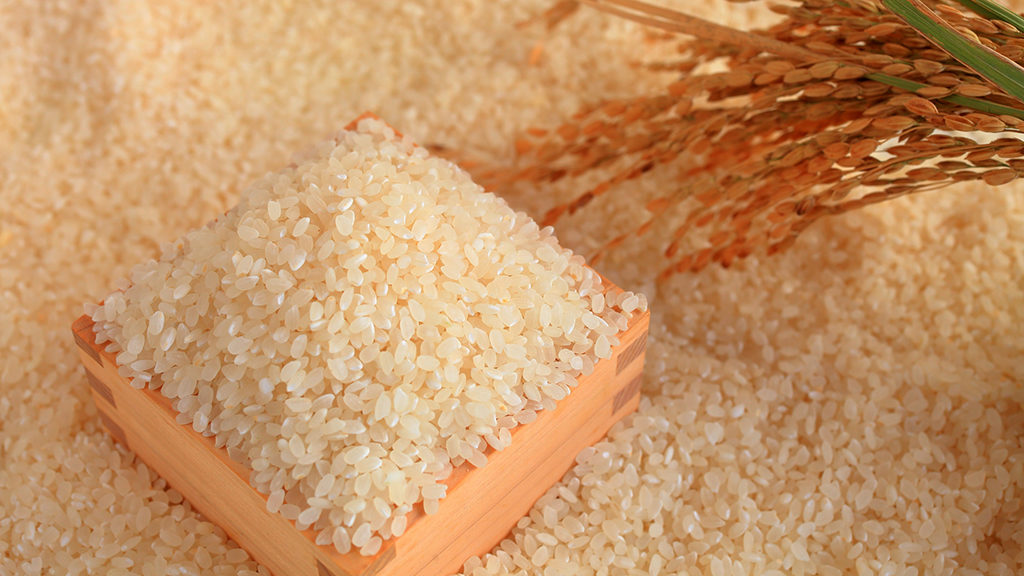A Comparison of Types of Rice in Japan

This post is also available in 日本語
Although it depends on the region, we will soon start to see “New rice to mark the beginning of the Reiwa era” across supermarkets etc. in Japan. New rice is white and glossy. It is sticky and has a sweet fragrance. As it has a high moisture content, you can add a little less water than usual , and as it is soft, you can polish it with a little less force than usual.
During this period, we often see the release of a “New rice taste comparison set” containing small amounts of a variety of types of rice. We encourage you to actually compare the tastes and discover the type of rice that you like the best. On this occasion, I will introduce you to brands of rice with a high crop ratio, and discuss their characteristics.
http://www.komenet.jp/pdf/H30sakutuke.pdf
Contents
Koshi-hikari
Koshi-hikari is the type of rice with the highest production quantity in Japan. It was developed in Niiigata and Fukui Prefecture, and is now cultivated in regions throughout the country. The rice itself has a rich taste, and good stickiness and hardness. Rather than light meals, it is suited to food with a rich taste, such as kara-age (fried chicken) and hamburger. As it is very sticky, it is not really suited to “cha-han”, “maze-gohan”, or sushi rice.


Hitomebore
Hitomebore was developed in Miyagi Prefecture, and is a type of rice developed throughout the country, but mainly in the Tohoku region. It is a sub-type of koshi-hikari. It has larger grains than koshi-hikari and is stickier. It is refreshing and has a soft feel. As it is lighter than koshi-hikari, it suits all kinds of food. It has a beautiful luster, and is particularly suited to Japanese food, such as “yaki-zakana” (baked fish) and “sashimi” (raw fish).


Hino-hikari
Hino-hikari is a type of rice developed in Miyazaki Prefecture that is mainly cultivated in Western-Japan. It is a sub-type of koshi-hikari. The price tends to be comparatively cheap. The taste is similar to koshi-hikari, but it is less sticky and lighter. When boiling rice, the taste does not tend to suffer even if you adjust the water quantity, so you can change the method of boiling depending on the menu. For example, when making cha-han, you can put less water in and make it hard. The rice does not crush easily, and it suits dishes where you place something on top of the rice, such as gyu-don or ten-don.


Akitakomachi
Akitakomachi is a type of rice mainly cultivated in Akita Prefecture. It is a sub-type of koshi-hikari. This was named after “Ono-no-komachi”, a singer from the Heian period, who was from Akita Prefecture and said to be one of the three great beauties of the world. There is a luster in every grain, and when boiled, its very appearance stimulates the appetite.. It has a chewy texture, is quite hard, and does not lose its taste even when cooled, making it ideal for lunch boxes and onigiri rice balls.



Nanatsuboshi
Nanatsuboshi is a type of rice mainly cultivated in Hokkaido. It was developed to be strong against the cold, to match the climate in Hokkaido. Just like Hokkaido with its beautiful stars, it was named based on the desire for it to shine like “Hokuto shichisei” (Big Dipper).
It is said to have an overall good balance in terms of whiteness, luster, taste, stickiness, hardness, and fragrance. Each grain is both resilient and light, so is a good match for sushi rice. Additionally, just like Akitakomachi, it does not lose its taste even when cooled, so works well for lunch boxes and onigiri rice balls.


Haenuki
Haenuki is a type of rice mainly cultivated in Yamagata Prefecture. It has both good hardness and bounce, as well as being chewy. The surface of each grain is resilient so does not tend to break down even when boiled. It also does not easily lose its taste even when cooled, so is often used for business purposes, such as lunch boxes and onigiri rice balls. This means that you have probably eaten it before even if you do not know its name.


Kinu-hikari
Kinu-hikari is a type of rice often cultivated in the Kansai region of Japan. It was named after its white luster like silk and its beautiful brightness. It is not so sticky and has a refreshing taste, so matches all kinds of side dishes very well. It has a slightly hard texture, and beautiful finish when boiled, so is often used in sushi shops.


- Fold Up Quickly! It’s a Handy Reusable Bag When You Go Shopping!
- If You Wonder What Should Give a Gift, This Is the Best Choice! Cool Packaged Handkerchiefs!
- Apply on UV Cream Without Getting Your Hands Dirty! Why not Have This Handy Puff?
- So Popular Character “Chiikawa” Cheers You Up! Improve Your Arched Back!
- If You Want to Improve Your Sleep Quality, You Should Change Your Pajamas! 3 Recommended Pajamas









